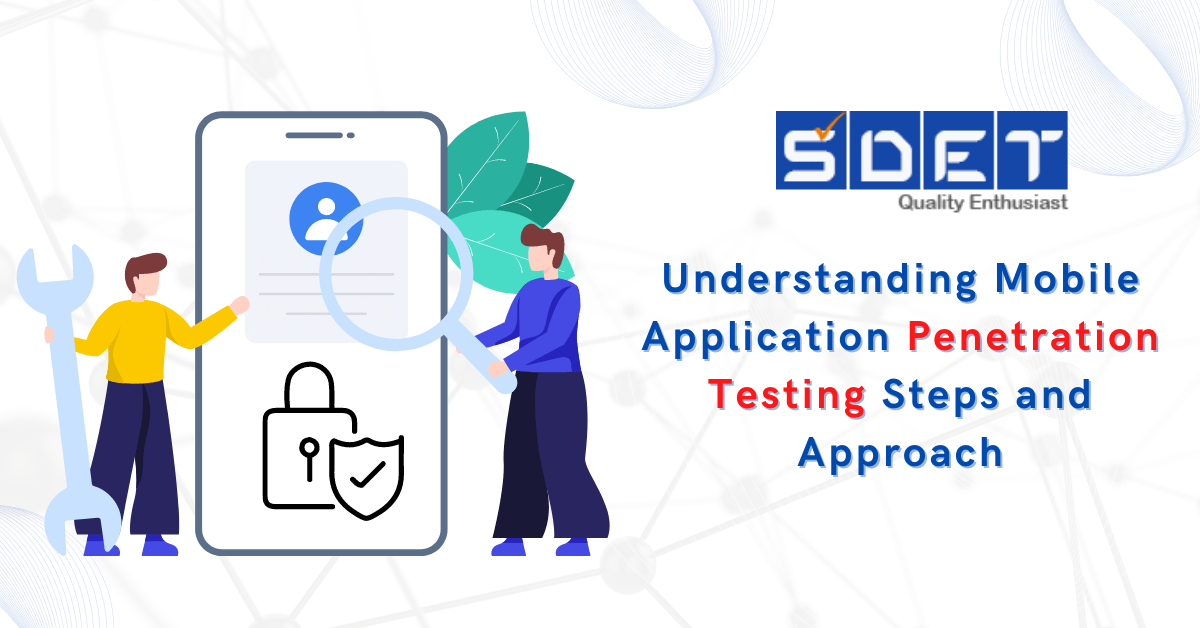
Understanding Mobile Application Penetration Testing Steps and Approach
Mobile application penetration testing is performed to find the vulnerabilities and safeguard the business mobile applications from fraudulent attack and threats
Why to perform Mobile Application Penetration Testing?
- Help in Identifying and Protecting Against Security Risks
Mobile application security testing is a thorough assessment of your mobile application that assists in identifying security vulnerabilities. Clear repair instructions include, along with consultant-assisted guidance, to help you understand and secure your mobile apps.
- Identify security threats to your users.
Identify mobile app security flaws that put users at risk, expose sensitive data, and endanger company integrity.
Mobile Application Penetration Testing Stages
Discovery
It requires that the penetration tester gather data necessary for understanding the events leading up to mobile application exploitation. As a result, intelligence gathering is a vital component of penetration testing. Identifying hidden indicators that can reveal any vulnerabilities can make the difference between a successful and unsuccessful penetration test.
The discovery stage includes:- Open Source Intelligence – The penetration tester gathers information about the application through the internet, social networking sites, or search engines.
- Platform Understanding — To create threat models for the app, the pen tester must first understand the mobile application platform. As a result, they consider the company, the business case, the stakeholders, and internal procedures.
- Client-Side vs. Server-Side Scenarios — A penetration tester should be familiar with the application, including web, native, or hybrid, and work on test cases.
Assessment
Assessment or analysis requires the pen tester to go through the source code to discover any possible flaws or entry points. This process is unique as the penetration tester needs to check the applications while installing them.
Various assessment techniques include the following:- Local File Analysis – The penetration tester evaluates the file system’s local files for violations.
- Archive Analysis — The pen tester extracts the installation packages for iOS and Android applications, and they then review them to see whether any modifications are necessary.
- Reverse Engineering – This process entails converting compiled applications to readable source code.
Exploitation
The penetration tester uses the vulnerabilities they have discovered. They will attack based on the information they have. Hence, a complete intelligence collection has better odds of effective exploitation that leads to a successful penetration test.
During the exploitation stage, the pen tester tries to exploit the vulnerabilities to acquire crucial information and conduct malicious activities. Furthermore, they experience privilege escalation to elevate privileged users to circumvent their activity restrictions. Moreover, the penetration tester runs modules that backdoor the device for performing access in the future.
Reporting
The methodology’s final stage is reporting. It entails informing management of all issues. Additionally, this is the point at which a penetration test differentiates from a real attack.
Mobile Application Penetration Testing is a vendor-neutral methodology that considers mobile characteristics, and it contributes to mobile penetration testing’s repeatability and transparency.
In Summary
We have seen how security issues in the real time world can hamper any business. In today’s competitive business environment, delivering secure and reliable customer experience has become the top priority for organizations. Mobile application security and penetration testing can help your business deliver robust security and safety to your customers. Talk to our cybersecurity experts at SDET Tech to know how we can make your mobile app safer.
